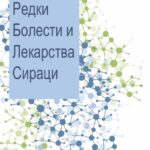 The editorial in Rare Diseases and Orphan Drugs discussed the main challenges to the long-term sustainability and effectiveness of the European Reference Networks (ERMs), mainly clarifying the legal status of these structures, defining mechanisms of their engagement, collaboration and communication within the national health systems, seeking sources of funding and last but not least, generation of a sustainable product. Now, 2 years later, we come back to this topic. Not all of the above mentioned issues have been resolved, but one thing is clear – the ERMs are here to stay. The second stage of their expansion with new expert centers is expected to start in the autumn of 2020. The current pandemic clearly shows that developing and promoting services in an electronic environment is a high-return investment. The ERMs faces the unique opportunity not only to justify the work and efforts of doctors, patients, health authorities and the academy so far, but also to make a leap into the future. This task is more than ambitious and the challenges are not insignifican – the long-term sustainability and efficiency not only of the ERMs, but of the health systems in the European Union. For more information click here.
The editorial in Rare Diseases and Orphan Drugs discussed the main challenges to the long-term sustainability and effectiveness of the European Reference Networks (ERMs), mainly clarifying the legal status of these structures, defining mechanisms of their engagement, collaboration and communication within the national health systems, seeking sources of funding and last but not least, generation of a sustainable product. Now, 2 years later, we come back to this topic. Not all of the above mentioned issues have been resolved, but one thing is clear – the ERMs are here to stay. The second stage of their expansion with new expert centers is expected to start in the autumn of 2020. The current pandemic clearly shows that developing and promoting services in an electronic environment is a high-return investment. The ERMs faces the unique opportunity not only to justify the work and efforts of doctors, patients, health authorities and the academy so far, but also to make a leap into the future. This task is more than ambitious and the challenges are not insignifican – the long-term sustainability and efficiency not only of the ERMs, but of the health systems in the European Union. For more information click here.
182
previous post
